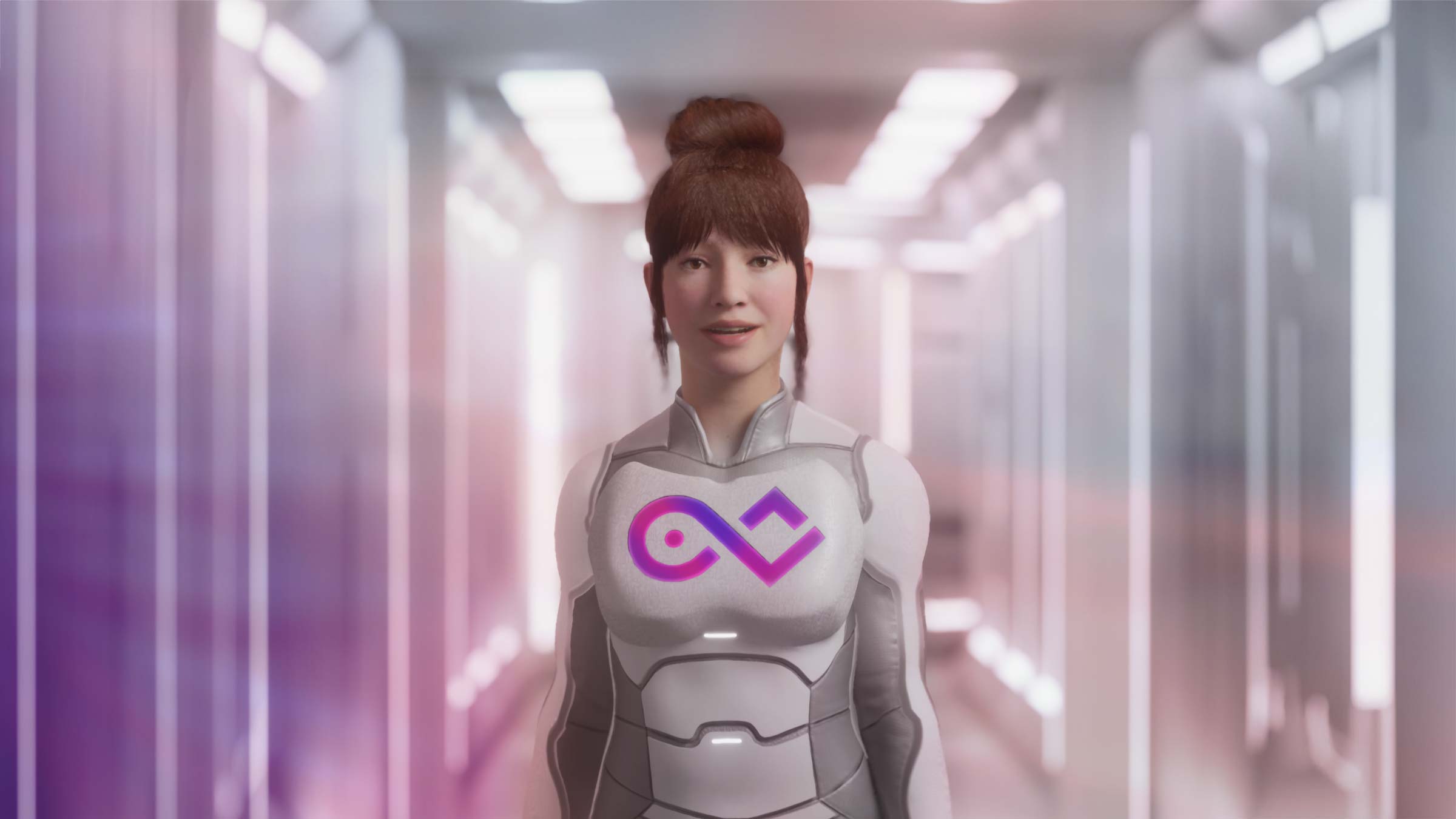Types of AI: what are the most relevant today?
Types of AI: what are the most relevant today?
Surprising as it may seem, the Artificial Intelligence is not new. It is an area of study in computer science and computing that has been researched since the 1950s.
However, it is only now, with the democratization of Generative Artificial Intelligence tools, when this technological trend and area of knowledge has reached all audiences. And to companies.
In today's article we would like to review the following topics what we mean by Artificial Intelligencehow it arises and, most importantly, what different types of AI exist.
What do we mean by Artificial Intelligence?
Before going deeper into the classification of Artificial Intelligence and knowing the different types of AI that exist, it is necessary to review what this technology consists of.
We understand by Artificial Intelligence the ability of machines to think/act like humans.. To perform tasks that normally require human intelligence.
All through algorithms that feed back and learn on their own through training with databreaking with the schemes of traditional programming. A combination of machine learning models, Big Data and strategies that perform tasks such as pattern recognition or even decision making.
As summarized by the great computer scientist Alan Turing in the famous 'Turing Test': "a computer can be called 'intelligent' if it manages to fool a person into thinking it is a human".
You may be interested in → Challenges of Artificial Intelligence applied to the enterprise.
Classifications of Artificial Intelligence
As mentioned at the beginning, Artificial Intelligence is an area of computation that has been studied for decades, so that, within the research on this technology, there are different approaches and currents.
Among all of them, we can highlight 3 different ones classifications of Artificial Intelligence. Stuart Russell and Peter Norvig's 'Think or Act' dilemma; and types of AI according to their capability or according to their learning.
The 4 types of Artificial Intelligence: Thinking or Acting
The computer scientists and researchers Stuart Russell and Peter Norvig proposed in their book "Artificial Intelligence: a modern approach."a distinction between the types of AI between "think or act" and between the more human, more biological approaches and the more rationality-focused, more logical-mathematical approaches.
Systems that think like humansThey are machines whose purpose is to mimic human thinkingsuch as artificial neural networks. These are based on the structure of the human brain itself and the Theory of Mind. The brain serves as an inspiration for the development of programs and algorithms.
Seeking understanding knowledge through semantic modelsLLMs and information systems. These IAs are focused on activities related to human thought processes, such as problem solving or decision making.
Systems that act like humans
Within this category are the systems that seek to act like humansThe Turing Test is the objective of these tests. They seek to understand the behavior.
An example of this can be found in the humanoid robots or virtual avatars with Artificial Intelligence, prepared to look/act like human beings. They are AIs whose goal is humanization.
Systems who think rationally
The focus in this type of Artificial Intelligence is no longer so much to think like humans, but to think like humans. think rationally. They do not seek to imitate human thinking, but to improve it, to go beyond it at a logical-rational level. Focusing on 'The Laws of Thought', mathematics, philosophy and logic to develop AI Computing. They are based on the use of computational models that study mental faculties, designing expert systems.
Systems that act rationally
Finally, we find the Artificial Intelligences that search for to rationally mimic human behaviorThese systems include all of the above approaches where rational agents perceive and act, seeking the best possible outcome. These systems include all the previous approaches where rational agents perceive and act, seeking the best possible outcome.
You can deepen its connection with other technologies in the influence of Artificial Intelligence in the Metaverse
Types of AI according to their capacity
According to its capabilities, Artificial Intelligence can be classified as follows Narrow Artificial Intelligencein General Artificial Intelligence or in Super Artificial Intelligence.
Some of them are already implemented in different companies and industries, such as the Artificial Intelligence in tourismindustry and education. Others, such as Super Artificial Intelligence, have only been theorized or shown in movies.
Narrow Artificial Intelligence
The Artificial Narrow Intelligence (ANI)is the most inflexible type of AI: its function is to focus on one single job and devote all its power and attention to it. Dedicated to one role. As a parallel would be a skilled professional engaged in a single complex function.
ANI Artificial Intelligence does not reproduce human behavior, it only simulates it in a specific function. That is why they are focused on concrete and specific objectives. As virtual assistants, for facial recognition, to filter spam, as autonomous vehicle systems, to create images, virtual assistants such as Siri or Alexa...
It is the most common type of Artificial Intelligence and the most widespread at user and enterprise level. The different tools for Generative Artificial Intelligence would also fall into this category, being specialized in one area and in solving one problem.
General Artificial Intelligence
Among the types of Artificial Intelligence, AGI is considered strong and deep, a machine capable of mimic human intelligence with a vast capacity for action. This AI can learn and replicate attitudes and behaviors to solve different issues.
AGI can think, which leads to a unique understanding and great adaptive capacityFor each scenario he has to deal with, he has a different proposed solution. With a resolution capacity very close to the human mind. A possible example of this type of AI can be found in V-E-G-Athe avatar equipped with Artificial Intelligence which performs the functions of assistance, presentation and conversation, humanizing the interaction with users.
Super Artificial Intelligence
As the last type of Artificial Intelligence in this classification, we find Super Artificial Intelligence (ASI). Where the AI goes beyond imitation to definitely surpass the human mind. The machine is capable of becoming conscious and autonomous. Being more skilled than humans, able to think better, more rational and faster.
This type of AI is still in development. We have only seen its potential in movies, particularly in science fiction and dystopian films such as Terminator. This AI will give machines the ability to be better athletes, doctors, artists and scientists, and even to the point of having emotions, judgments, opinions and desires of their own.
Other types of Artificial Intelligence (AI)
Artificial Intelligence is not explicitly programmed, but data is given and algorithms are trained. Depending on the learning model and data typology with which they are trained, we can classify Artificial Intelligence into:
Automatic learning
Better known by its English term machine learning'. It is one of the types of Artificial Intelligence that has the greatest impact on business.
It is a automatic learning of machines/computer systems from structured data. The information is filtered with different variable designs, where the algorithm and different models learn from this data and provide results.
These are programs whose performance improves with experience. Three types of ML or learning strategies are currently used for these models: supervised learning (guided through labeled data), unsupervised learning (the system autonomously finds patterns) and reinforced learning (the system learns based on reinforcement, where we have the reward function).
Deep learning
The deep learning is a step further in learning. They are multilevel programs based on neural networks with different connected machine learning models that help each other.
Deep learning allows us to use unstructured data such as images and videosThe different machine learning models will find the structure of the data autonomously.
Expert system
Expert systems are computer programs that have the following objectives solving a very specific problem by emulating the reasoning of an expert in the field.
Projecting all the capacity of Artificial Intelligence in a single objective. They are commonly used in specific areas such as finance, medicine, logistics... to mimic the decision making of a professional in this field. Its training and learning model is totally focused in that area.
If you are interested, discover the interactions between Augmented Reality and Artificial Intelligence.
Imascono's Artificial Intelligence Projects: V-E-G-A
One of the most innovative and decisive applications of Artificial Intelligence in the business environment is its implementation in user experience and customer interaction (externally) and employees (internally). Where AI agents and avatars play a key role in efficiency, personalization and communication.
Avatars equipped with Artificial Intelligence are already a reality among companies. V-E-G-A (Virtual Enterprise Generative Avatar) is the new generation of hyper-realistic virtual avatars with generative AI. Virtual avatars that allow to enrich the quality of the interactions thanks to the humanization of Artificial Intelligence.
At Imascono we humanize technology projecting and developing the new era of digital products.
We have Artificial Intelligence services for companies. Our team of professionals specialized in AIcan help you incorporate the great advances of Artificial Intelligence in your company. With virtual avatars like V-E-G-A, not only does customer service become more personalized, but it also allows you to connect with your audience in a more natural and humanized way, collecting analytics on both interactions and user behavior with the company.
If you have questions about how to implement Artificial Intelligence in your company, do not hesitate to contact with us.




